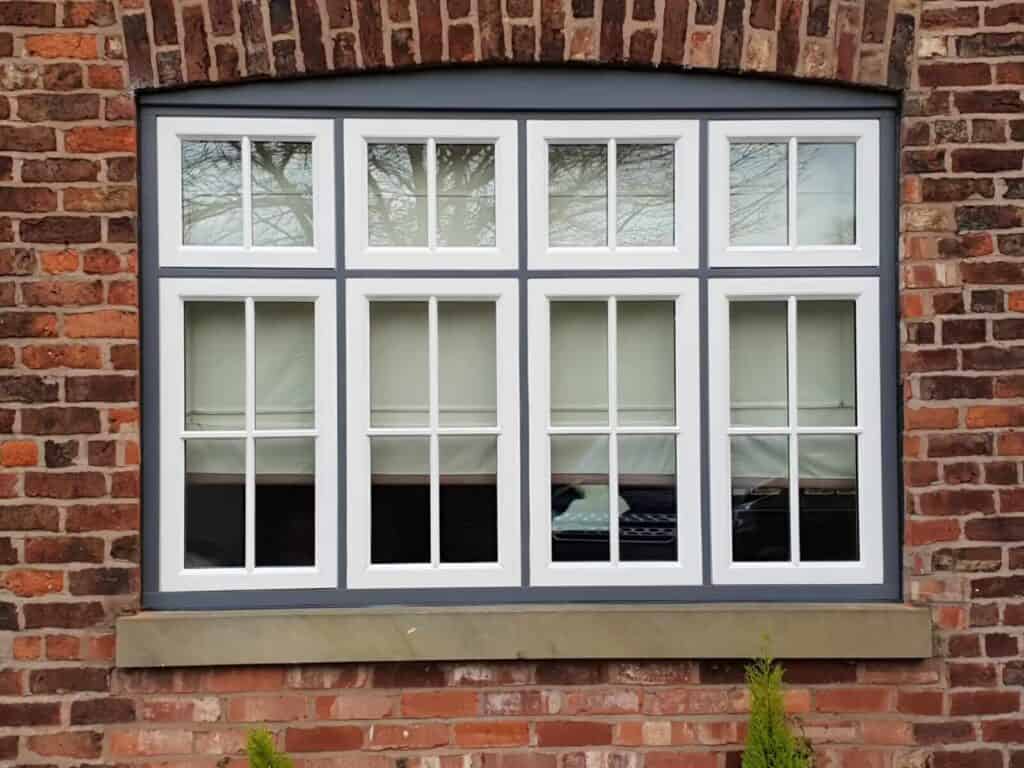The Essential Guide to Standard Door Size in The UK
There are no specific regulations for doors in people’s homes in the UK, but there are general building regulations that...
Read MoreLast Updated: 5 September 2022
Bifold doors make an excellent addition to the home. They consist of several glazed panels that fold and stack on top of one another as the doors are opened. Once opened, they flood the home with natural light while creating a chic transition between the inside and out.
For anyone who is interested in a set, you may have wondered ‘what lintel do bifold doors need?’. So as bifold door experts, we thought we would answer this question and more.
The lintel is the horizontal beam that runs above the opening for a window or door. Their purpose is to provide essential structural support. To comply with British Standards for construction, it is possible for lintels on windows and doors to bend slightly without affecting how they are operated, or for the bend to even be visible. However, this is not the case for the bifold doors…
 As bifold doors open in a concertina style, where their individual door panels fold and stack on top of one another, even the smallest bend in the lintel can stop them from sliding open or shut.
As bifold doors open in a concertina style, where their individual door panels fold and stack on top of one another, even the smallest bend in the lintel can stop them from sliding open or shut.
Therefore, it is recommended that a heavy-duty or rolled steel lintel is used for bifold doors because this will ensure there are no bends present.
However, the best lintel option is also affected by various other factors, such as:
Another important consideration is whether they are top or bottom running. For example, Accoya timber bifold doors are top running and aluminum bifold doors are bottom running. However, we take care to ensure the lintel is absolutely fit for purpose.
 If a new opening is being created for bifold doors, our structural engineer will be given the task of calculating and producing drawings to ensure adequate structural support.
If a new opening is being created for bifold doors, our structural engineer will be given the task of calculating and producing drawings to ensure adequate structural support.
However, on most occasions, an engineer will assess the suitability of the existing lintel, which is normally sufficient.
Reddish Joinery works closely with our structural engineer, who will assess your property and choose the correct lintel.
To determine your required lintel size, measure the width of the opening where your bifold doors will be fitted and then add a minimum of 150mm to each end.
So, for bifold doors that are 2100mm wide, you will need to add 300mm (150mm x 2) to this, giving you a total of 2400mm.
Are you interested in a set of bifold doors for your home? Get in touch with Reddish Joinery today. We are available to call on 0161 969 7474 or you can contact us online.
Read our related blogs:
There are no specific regulations for doors in people’s homes in the UK, but there are general building regulations that...
Read MoreWhen we speak to our customers, they often inform us of the many home improvement projects they’re looking to complete...
Read MoreAbsolutely! Bifold doors are perfect additions to conservatories thanks to their slim sightlines and large panes of glass. Conservatories are...
Read MoreUnfortunately, thieves are becoming smarter and working out new ways to break into our homes. It means our home security...
Read More